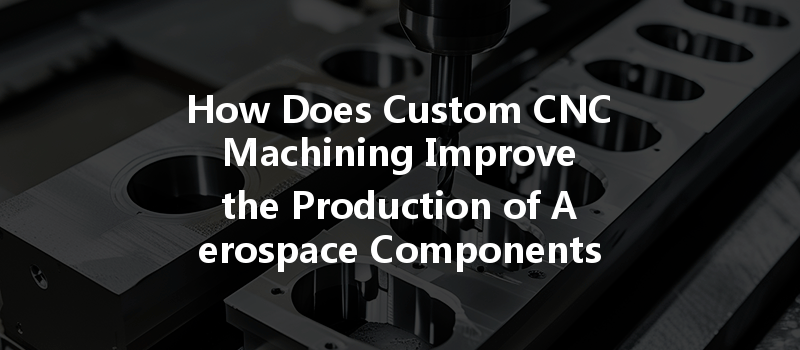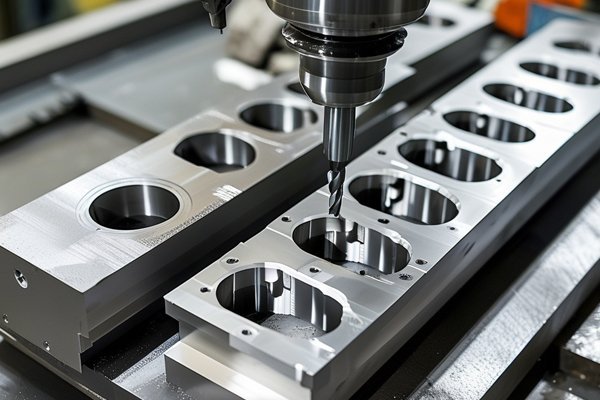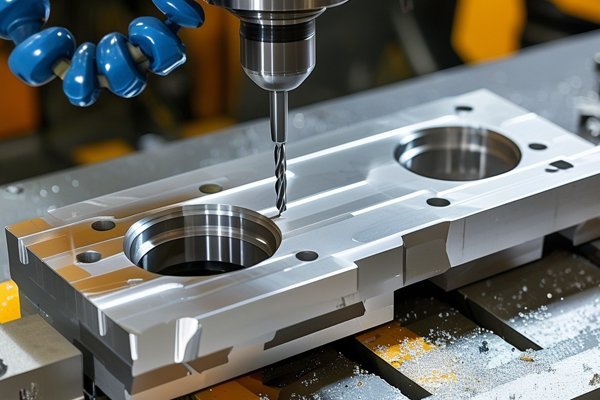Did you know that the aerospace industry is one of the most technologically advanced sectors in the world? According to a report by the International Air Transport Association (IATA), global air traffic is expected to double over the next two decades. This dramatic increase raises the stakes for manufacturing processes, especially the production of aerospace components where precision and reliability are paramount. Custom CNC (Computer Numerical Control) machining is a game-changing solution for the aerospace industry, improving efficiency, quality, and flexibility in manufacturing.
In this blog, we will delve deep into custom CNC machining and its impact on aerospace component production. From understanding basic concepts to exploring advanced techniques and applications, this blog aims to provide a comprehensive overview of how custom CNC machining can effectively tackle the challenges faced by aerospace manufacturers.
—
CNC machining is a manufacturing process that involves the use of computer software to control machine tools. It allows for the creation of complex shapes and parts by removing material from a workpiece. CNC machines operate with high precision and repeatability, making them ideal for the aerospace sector where tolerance levels are often less than 0.01 mm.
Subtypes of CNC Machining
There are several subtypes of CNC machining, including:
These processes can be customized to meet specific manufacturing requirements, enhancing performance for specialized aerospace applications.
—
In aerospace, every component must adhere to strict quality and safety standards. Off-the-shelf parts often lack the necessary precision or unique specifications required for specific aircraft or satellite designs. Custom CNC machining allows manufacturers to design and fabricate parts tailored to meet these distinct criteria.
Factors Making Customization Crucial:
By utilizing bespoke manufacturing techniques, aerospace manufacturers can ensure optimal performance and compliance with regulations.
—
Custom CNC machining offers several advantages that make it a preferred choice for aerospace component production.
A. Precision and Accuracy
The most significant advantage of CNC machining is unparalleled precision. The software-controlled machines can produce parts to exact specifications, crucial in an industry where even slight deviations can have catastrophic implications.
B. Consistency and Repeatability
Once programmed, CNC machines can produce identical parts with high repeatability. This consistency reduces waste and contributes to a more efficient production process.
C. Flexibility and Adaptability
CNC machines can quickly adapt to changes in design or specifications. If a new part design is required, the software can be updated to generate the necessary machining instructions without needing to invest in new tooling or setups.
D. Enhanced Material Utilization
Custom CNC machining maximizes material usage through optimized path planning, minimizing waste. This not only saves costs but also aligns with modern sustainability practices.
E. Reduced Lead Times
With rapid prototyping capabilities, custom CNC machining can significantly reduce lead times, allowing manufacturers to bring their products to market faster.
—
The application of custom CNC machining in the aerospace industry is vast. Here are a few examples of specialized uses in this sector:
A. Aircraft Structural Components
Aircraft wings, fuselage sections, and other structural elements benefit from high-tolerance machining that CNC provides. Custom parts can be designed to withstand specific stress loads while maintaining lightweight characteristics.
B. Engine Components
CNC machining is crucial for manufacturing engine components like turbine blades and housings, which require complex geometries and high material integrity to operate safely at high temperatures and pressures.
C. Avionics Mounting Systems

Custom machined plates and brackets are tailored to secure sensitive avionics equipment, ensuring both safety and efficient space utilization within the aircraft.
D. Specialized Fasteners and Fittings
Unique fasteners, like aerospace-grade bolts and nuts, often require custom dimensions to meet specific certification requirements, making CNC machining an invaluable resource.
—
Aerospace components must be manufactured from materials that deliver excellent performance under extreme conditions. Common materials include:
Custom CNC machining techniques can be applied across these materials to achieve the desired part specifications.
—
The process of CNC machining involves several key steps, each critical in producing high-quality aerospace components.
A. Design and Prototyping
CAD (Computer-Aided Design) software is used to create detailed designs of components, allowing for rapid prototyping and revisions if necessary.
B. CNC Programming
CNC machines require specific programming instructions, often generated automatically from the CAD file, detailing the machining operations needed for execution.
C. Setup and Machining
Technicians set up the CNC machinery and secure the materials. The programmed instructions guide the machine through the necessary steps, including cutting, drilling, and milling.
D. Quality Control
Post-machining inspections are critical. Precision measurements using advanced tools (such as coordinate measuring machines) ensure each part meets strict quality standards.
E. Finishing and Treatment
Parts may undergo additional treatments such as anodizing or heat treatment to enhance performance and durability before final delivery.
—
While custom CNC machining offers numerous benefits, it is not without its challenges.
A. High Costs
The initial investment required for CNC machines and custom tooling can be substantial. However, the return on investment often justifies the expense due to long-term savings in production efficiency and reduced waste.
B. Technical Expertise
A skilled workforce is essential for CNC programming and operation. Companies can invest in training programs or partner with external experts to bridge knowledge gaps.
C. Material Limitations
Some advanced materials require specialized machining techniques. Collaborating with material suppliers or utilizing cutting-edge machining technologies can help address these challenges.
D. Regulatory Compliance
Staying abreast of aerospace regulations is essential. Companies can streamline this by maintaining a robust quality management system and engaging with regulatory bodies.
—
As the aerospace industry continues to evolve, custom CNC machining will adapt to emerging trends.
A. Automation and Robotics
The incorporation of robotics and AI in machining processes promises to enhance precision, speed, and efficiency while reducing labor costs.
B. Additive Manufacturing Integration
The combination of CNC machining with additive manufacturing (3D printing) can produce complex assemblies that would be impossible or cost-prohibitive to create with traditional methods alone.
C. Sustainable Practices
The industry is pushing for green manufacturing. CNC machining can explore the use of recyclable materials and reduce energy consumption through more efficient machining processes.
D. Enhanced Software Solutions
Improvements in CAD/CAM software can facilitate better design simulations, enabling engineers to visualize complex components before machining begins, ultimately minimizing errors.
—
Custom CNC machining is revolutionizing the production of aerospace components by enhancing precision, efficiency, and adaptability. With the challenges posed by the industry’s regulations, material demands, and performance requirements, CNC machining stands out as a solution that empowers manufacturers to create components tailored to exact specifications.
As we reach closer to a future defined by technological advancements, the role of CNC machining in aerospace is expected to grow even more critical. It not only guarantees the safety and reliability of aerospace components but also paves the way for groundbreaking innovations in aircraft design and functionality.
As you reflect on the implications of custom CNC machining, remember that it is more than just a manufacturing process. It is a vital contributor to the advancement of aerospace technology, ensuring safe skies for the future. Understanding its importance can help stakeholders make informed decisions that benefit both the industry and society as a whole.






